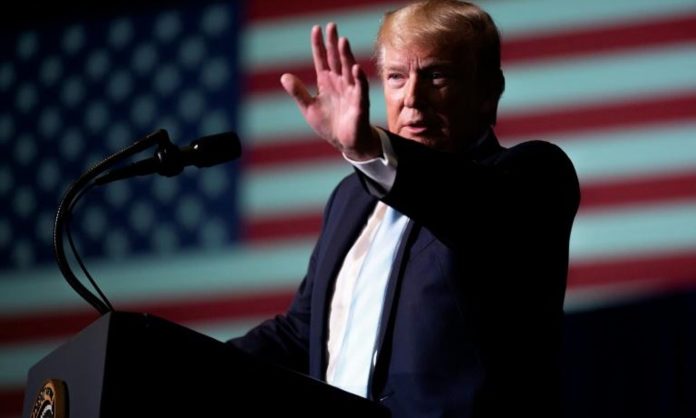The US drone strike that killed top Iranian commander Qasem Soleimani has revived debate about whether American presidents have unilateral authority to launch attacks and send soldiers into battle, or must await congressional approval.
War powers are divided in the US Constitution, and not in a definitive way, experts say, leading to a decades-long tug of war between the White House and Congress over who has final say on military action.
President Donald Trump ordered the attack that killed Soleimani in Baghdad, Iraq last week, and his administration has claimed it was an “absolutely legal operation.”
Democratic lawmakers have questioned its legality and warned Trump does not have authority to march the United States into a war with Iran.
Here is a look at where US war powers reside.
War Powers Resolution
Article 1 of the Constitution limits a president’s authority to use force without a congressional declaration of war. But since World War II commanders in chief have assumed broader authority to send US troops into hostilities — often actions short of war — without Congress consenting.
The controversial War Powers Resolution (WPR) was enacted in 1973 over the veto of Richard Nixon as a way for Congress to claw back its authority, following a massive, undeclared war in Vietnam.
It states that “the president in every possible instance shall consult with Congress before introducing United States armed force into hostilities,” and forbids troops from remaining for more than 90 days without a congressional authorization for use of military force (AUMF).
The WPR has proved a weak constraint on presidential power, with every White House since arguing it unconstitutionally shackles a commander in chief in the performance of their duty.
“It’s time for Congress to take back that responsibility,” Senator Kirsten Gillibrand tweeted Monday.
Dominant executive authority
Presidents for decades have claimed authority to use military force to defend US personnel and respond to or prevent attacks.
Months after the 9/11 attacks in 2001, George W. Bush received broad authority for the use of military force in Iraq, an AUMF that each subsequent president has cited in launching attacks in the Middle East, including in Syria.
Barack Obama was criticized in 2011 for not seeking congressional authorization to launch strikes in Libya against that country’s forces and government. He claimed he was acting to prevent a humanitarian disaster.
Trump had the legal obligation under the War Powers Resolution to notify Congress within 48 hours of the Soleimani missile strike, and he did so Saturday in classified form.
National Security Adviser Robert O’Brien said Trump was “fully authorized” by the 2002 AUMF, something many Democrats fiercely reject.
But the administration has also signalled it is aware of limitations.
Last year, when asked by lawmakers whether the AUMF gave Trump authority to attack Iran, then defense secretary nominee Mark Esper, now the Pentagon chief, cautioned: “Not to conduct a war.”
Next steps
House Speaker Nancy Pelosi announced her chamber will vote this week on a new war powers resolution to curb Trump’s military actions.
Republican Senator Lindsey Graham said he would oppose restricting Trump’s “latitude” to conduct foreign policy.
“The last thing America needs is 535 Commanders in Chief,” Graham said, referring to the number of US lawmakers.
Congress took a huge step toward such restrictions last April when it passed a measure ending US involvement in the Yemen war. But Trump vetoed the legislation.
Harvard Law School professor Jack Goldsmith wrote in Lawfare blog Friday that “presidential aggrandizement” and congressional acquiescence has led to a president’s enormous discretion to use the military “in ways that can easily lead to a massive war.”
“That is our system,” he added. “One person decides.”
from Defense News by DefenceTalk.com https://ift.tt/2ursmfH
via Defense News


No comments: